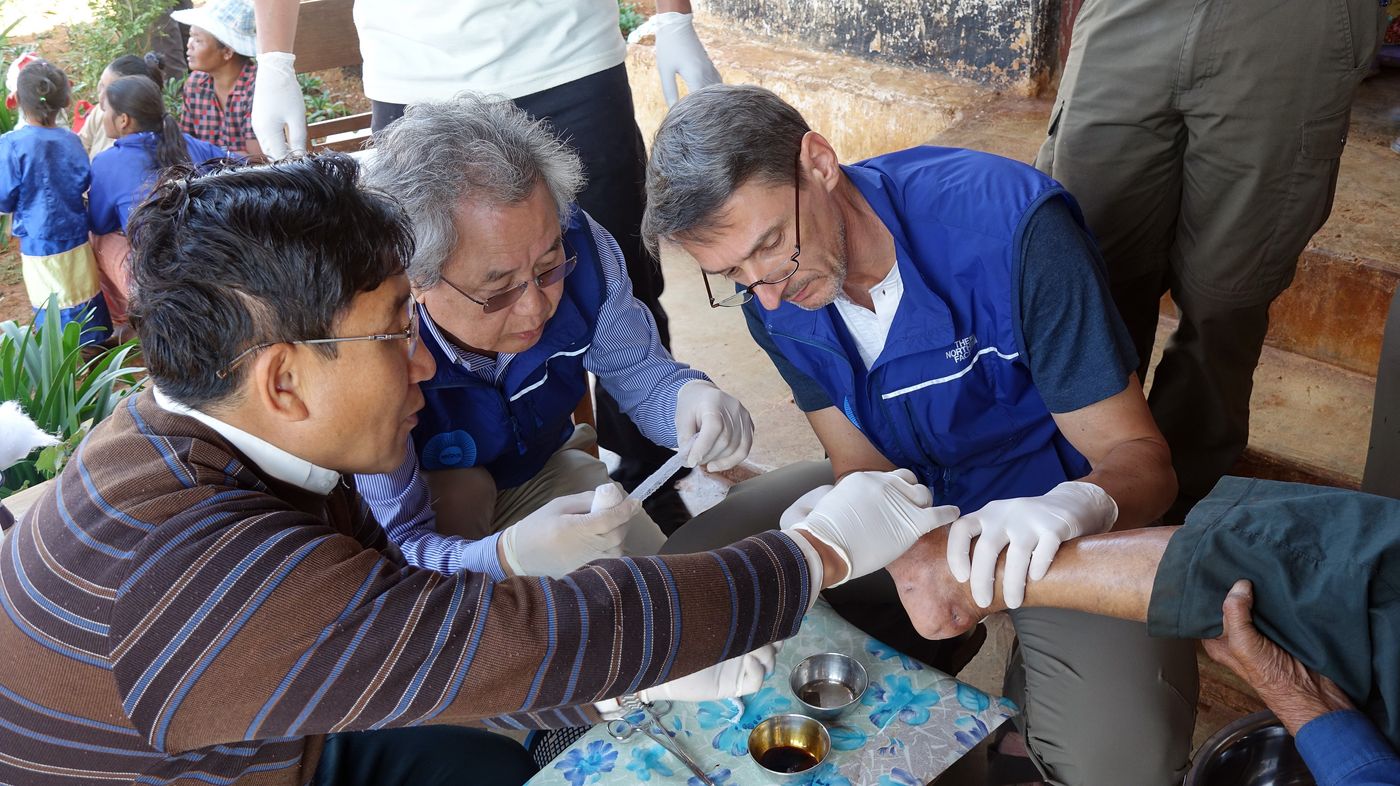About Leprosy
Leprosy is one of the oldest diseases known to man. Early writings such as the Hearst Papyrus from Egypt (about 1500 B.C.) report on leprosy, which is described as Asian Disease. There are also texts in the Old Testament on what is described as leprosy, but this is probably a collective name for a number of different diseases. While there have been no cases of leprosy developing in Germany for decades (the last were two imported cases in 2010) there are about 250,000 new instances annually around the world. The greatest number of new cases may be found in India, with about 100,000, followed by Brazil with 40,000. In Europe there are a significant number of cases in the countries which used to belong to the Soviet Union. The number of persons who have suffered permanent damage and handicaps is about 4 million world-wide. Leprosy is a chronic infectious illness.
The pathogen of leprosy is the Mycobacterium leprae, identified in 1873 by the Norwegian physician Gerhard Henrik Hansen, which is why the disease is also called Hansen's disease. The bacterium practically only multiplies in the human body and does so very slowly due to its very long generation time. Cultivating it on culture media is still not possible; there is no vaccine against leprosy. The exact mode of transmission of the bacterium has not yet been fully established, but it is highly likely to be transmitted through droplet infection via the mucous membrane of the nasal passages. A prerequisite for infection is prolonged and close contact with an untreated individual who carries many bacteria.

Due to their inborn strong immune system up to about 95% of the world population cannot be infected with leprosy. The incubation period, the period between infection and the appearance of the first symptoms, is unusually long and is between 6 months and many (up to 40) years, but on average 4 years. A breakout of the illness is encouraged through: poor nutrition, insufficient hygiene, close living quarters and an insufficient genetic and environmentally influenced immunity. An undetected infection can remain without symptoms for years and even heal itself without any therapy. If there should be a further spread of the bacteria, it mainly affects the skin with the typical fleck-shaped changes and knots and the areas of poorer blood circulation and therefore cooler parts of the body such as the hands, feet, ears, and nose. The Mykobacterium lepra can establish itself particularly well in these cooler areas.
Other important areas of infection are the peripheral nerves with damage to the senses of touch, pain, temperature, and vibration. In these nerve infections there is a knot-like swelling of the nerve which can be easily detected by touch. The loss of the senses of pain and sensibility in the fingers and feet often lead at first only to minor injuries, but later there are infections. Due to sustained infection the bones may also be affected, which leads to the death and loss of extremities. Leprosy is one of the most important causes of serious eyesight problems right up to blindness, triggered by an infection of the eye by the leprosy bacteria.
Since 1982 leprosy is considered by the WHO to be curable! Nowadays the therapy consists primarily of a standardized combined application of different antibiotics, the so-called multi-drug-therapy (MDT).
Depending on the form of the illness the therapy must be continued for six months to a year. Often cortisone is used in the further course of treatment. Astonishingly, so far the pathogen has not developed a resistance to the antibiotics being used. The World Health Organization (WHO) is directing the free distribution of the medicine world-wide. The products are being provided free of charge by the pharmaceutical companies Novartis, Sandoz, and the Stiftung für nachhaltige Entwicklung (Novartis). This has enabled about 14 million cases of leprosy to be cured in the past 20 years.
Other important components of the therapy are complex treatment concepts involving plastic surgery (removal of mutilations which lead to stigmatization), physiotherapy and rehabilitation as well as measures for reintegration into normal social life. Additionally, infection prophylactics are fundamental for the prevention and elimination of leprosy.
Early detection and treatment of leprosy are essential to prevent the stigma associated with the physical consequences of the disease.
The St. Lazarus-Fonds is particularly dedicated to the questions of integration and re-socialisation in order to improve the living conditions of the sufferers and their families.
Th. Gille, specialist for inner medicine, Königstein/Ts.
Social Consequences

Noung was 42 years old when she noticed the knotty, red, skin changes.
The mother of four children ignored these first changes. When she was diagnosed with leprosy, or Hansen's Disease, as it is known today, her previous life was suddenly at an end. Noung fell out of the world. Her husband threw her out. Almost overnight she had to leave her family, her village, everything which had made up her life to that point.
Alone, avoided by everyone, she experienced what it means to be an outcast – to live with an illness which doesn’t just destroy the body, but every human relationship.
Noung found a new life in Phan Thiet Village, a non-profit leprosy station in Vietnam. When she leaves the house in the morning she knows that she may work, that she will meet other people. She receives medical care, has enough to eat, and a roof over her head. She experiences confirmation of her worth, and respect, and has also made new friends. However, she never saw her children again.
This typical example of a lived experienced leprosy infection and its consequences shows that leprosy is not only a treatable disease, but still a social problem in many countries of the global South. Eliminating social disadvantages of people affected by leprosy and improving their living conditions is the main goal of the St. Lazarus-Fonds.